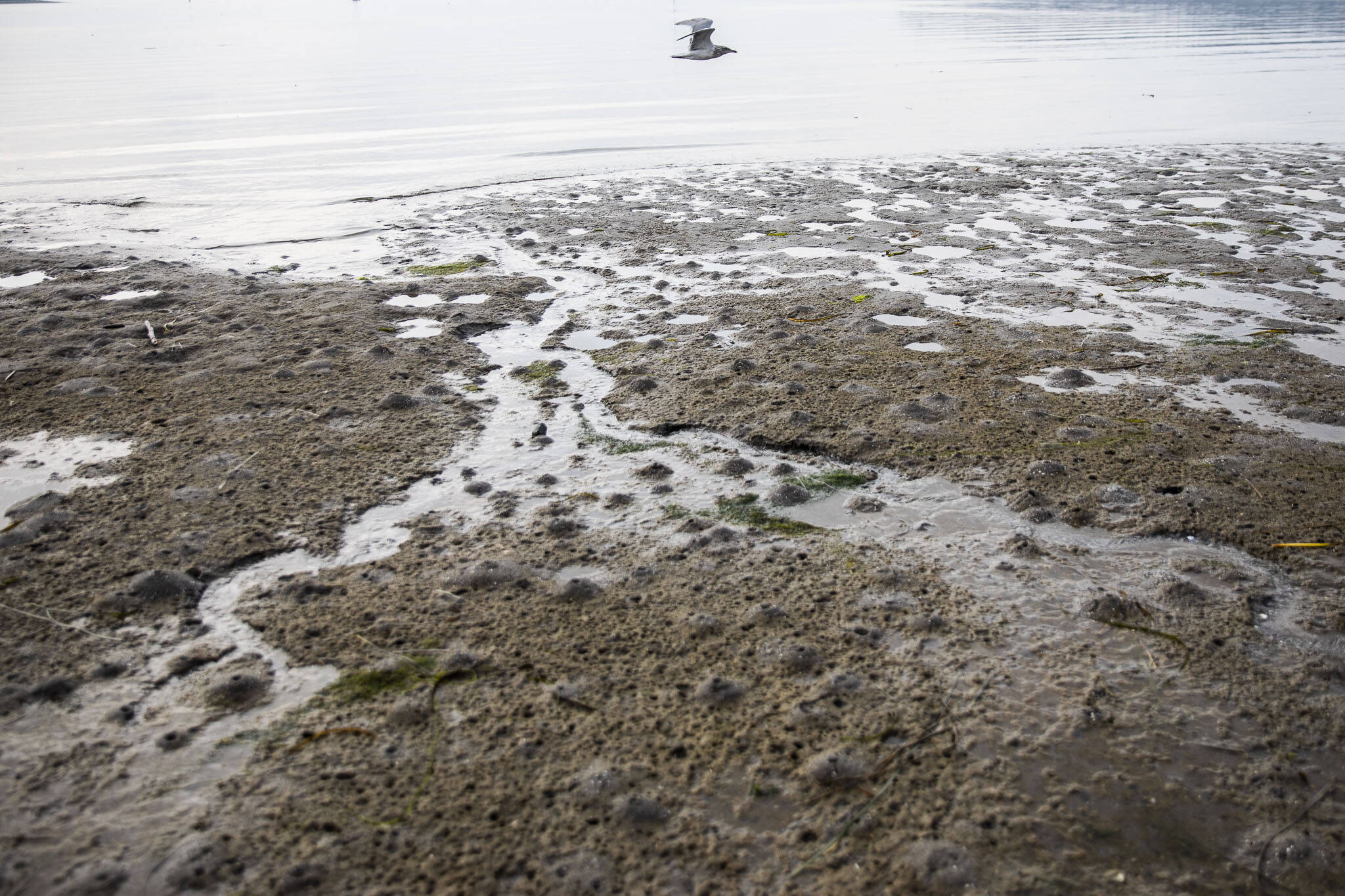A boat followed a red plume through dark waters last week, traveling slowly. The plume spread, moving south between Whidbey and Camano islands and north to Deception Pass.
That morning, scientists had added harmless food dye to treated wastewater from the Oak Harbor Clean Water Facility, the city’s sewage treatment plant. It was then released into Puget Sound, staining the waters red for the day. Scientists tracked the dye’s movement and measured concentrations.
It was part of a five-day study on shellfish safety, led by scientists from the state Department of Health and Food and Drug Administration.
“We are evaluating any potential impacts to commercial shellfish areas from this plant,” said Mark Toy, the study lead and an environmental engineer with the state health department.
The dye study was originally scheduled for 2019, when the city completed its $150-million sewage plant. Technology issues and the COVID-19 pandemic delayed it three times.
The shores of Whidbey Island are rich shellfish growing areas. Statewide, shellfish are a $150-million-a-year industry.
Penn Cove Shellfish, based in Coupeville, grows and harvests 2 million pounds of mussels a year plus clams and oysters. Owner Ian Jefferds said Penn Cove, south of Oak Harbor, is “our key mussel growing area.”
The shellfish grower supplied a boat for last week’s study.
“We were there to help out because it’s an important part of making sure Penn Cove stays clean,” Jefferds said.
Sewage spills and pollution can affect water quality and make shellfish unsafe to eat, leading to emergency closures of beaches and commercial shellfish areas. The state health department monitors and regulates shellfish safety.
In February 2020, it closed Penn Cove for shellfish harvest for three weeks after a sewage overflow in Oak Harbor. During a rainstorm, a manhole cover exploded and dumped about 1 million gallons of untreated sewage into Puget Sound. The heavy rainfall exceeded capacity of the city’s brand new wastewater plant.
Jefferds said the company lost income when the shellfish area closed, impacting 60 employees. Customers were also unable to get their products, he said.
“It’s not something we want to repeat,” he said.
Statewide, between 150 and 170 sewage spills are reported a year to the state Department of Health, a few dozen of which result in closures, Toy said.
With the help of the red dye, scientists will better understand the movement of wastewater from the Oak Harbor plant through the surrounding waters and possible impacts to shellfish.
“The whole point is to close an area before you have unsafe shellfish in the marketplace,” Toy said. “We’re trying to prevent illnesses and recalls.”
On Monday, the red plume traveled up and down Saratoga Passage, but mostly stayed in Penn Cove, he said. Fluorometers on the back of the boat collected data on dye concentrations.
“It’s only visible to the naked eye at relatively high levels,” Toy said, “But instruments can measure down to 0.01 parts per billion.”
The tracking part of the study is over. This Monday, scientists will collect stationary fluorometers attached to oyster cages in the water. The cages were left for a week to collect additional data, Toy said.
Oysters and fluorometers will be sent to two FDA labs on the East Coast. Toy said the health department is interested in the relationship between the dye concentrations and bacteria in the shellfish.
“If you’ve got a correlation, you know the wastewater effluent impacts the shellfish,” he said.
Past red dye studies have been conducted in waters around Blaine, Grays Harbor and Shelton.
Meanwhile, Oak Harbor has taken steps to avoid future overflows at its sewage plant.
Last year, the city installed additional membrane bioreactor modules to increase treatment capacity, said Public Works Director Steve Schuller. The city is also working to secure a $2 million federal grant to reduce infiltration in old sewer lines. The project would lessen high flows in heavy rainstorms, Schuller said.
“I think overall the Oak Harbor wastewater plant does an excellent job of treating its waste,” Toy said. “The main concerns are capacity during intense rainfall events, which they are starting to address.”


